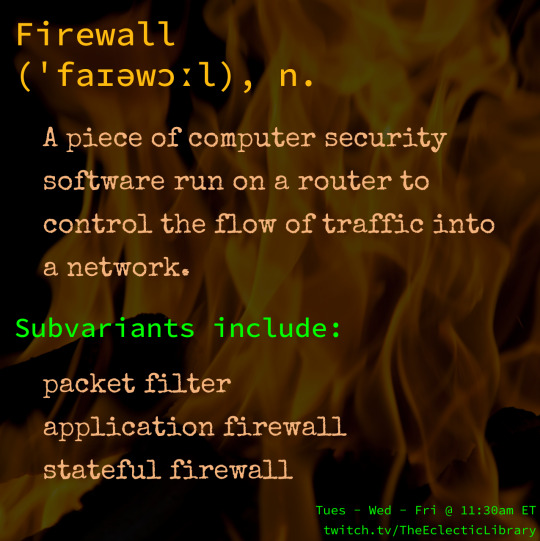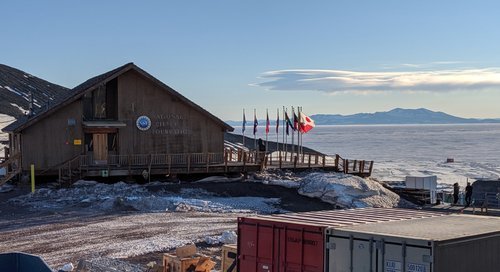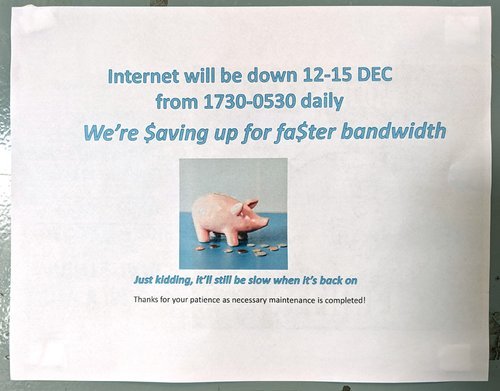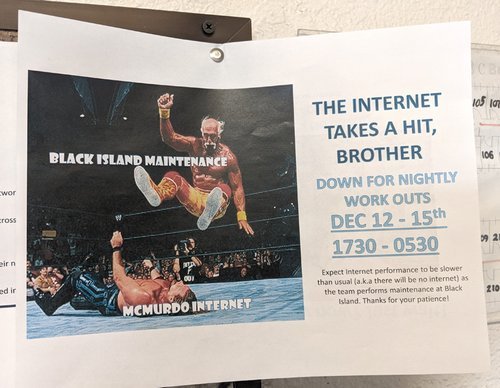#firewall in computer network
Explore tagged Tumblr posts
Text


my first introduction to firewall during my childhood
Tom and Jerry Tales | S1 E16 Digital Fireball
#genuinely i thought firewalls must exist like this inside the computer#computer science#computer network#computer security#computer forensics#firewalls#coding#cs#csblr#tom and jerry#tom and jerry tales#tom#jerry#i am talking
4 notes
·
View notes
Text

#twitchstreamer#firewall#cybersecurity#eclectic library#computers#networking#technology#crash course in tech
5 notes
·
View notes
Text

At The JMOR Connection, Inc., we are driven by a single mission: to provide exceptional, reliable technology solutions that keep your business and home systems running smoothly and efficiently. With over 31 years of experience, we understand the unique needs of both small businesses and discerning home users, offering cutting-edge technology and personalized services to solve complex IT challenges.
We believe that quality and integrity are at the heart of everything we do. We aren't just here to fix your IT problems--we are here to build long-term relationships by delivering innovative solutions that ensure the security, scalability, and reliability of your systems. Proactive and preventative measures are our focus to prevent downtime and cybersecurity threats, and we strive to make technology work seamlessly for you, whether at home or at the office.
Our team goes beyond offering technical expertise. We provide value by personalizing services to meet your specific goals, whether you're a business or a home user. We offer a variety of services that span from network security, cloud solutions, to IT support and more. We prioritize security and privacy, applying the latest practices in data protection and regulatory compliance to ensure the safety of your information.
While we may not be the cheapest, we don't compromise on quality. Our clients know that with us, they are receiving the best value and best service in the industry. By investing in us, you are investing in the future success of your technology needs.
We ask one simple question: Are you willing to sacrifice quality for price? At The JMOR Connection, Inc., we believe that quality technology solutions today will lead to a more efficient, secure, and successful tomorrow. We're here to help you grow with scalable, future-proof IT solutions--whether for your business or your home.
#wifi#technology#support#sled#server#phonesystem#networksercurity#networks#iphones#ipcameras#firewalls#Deployment#computers#antivirus
0 notes
Text
Laptop Repair in Chicago IL

Dreamwerx Facility Services offers reliable laptop repair in Chicago IL, handling everything from hardware issues to software troubleshooting. Our certified technicians ensure fast, efficient repairs to get your devices back in top shape. Choose Dreamwerx for trusted Computer Repair Service in Chicago IL backed by expert care and customer satisfaction.
#Computer Repair Service in Chicago IL#IT Services in Chicago IL#Home Network Installation in Chicago IL#Data Recovery Services in Chicago IL#Laptop Repair in Chicago IL#Motherboard Repair in Chicago IL#Battery Replacement in Chicago IL#Hard Drive Replacement in Chicago IL#Firewall Configuration in Chicago IL#Computer Repair Service near me#Home Network Installation near me#Data Recovery Services near me#Laptop Repair near me#Motherboard Repair near me#Battery Replacement near me#Hard Drive Replacement near me#Firewall Configuration near me
1 note
·
View note
Text
AWS Network Firewall: Flow-Based Control Improves Security

AWS Network Firewall
Using AWS Network Firewall for Flow Management Improves Network Security
AWS Network Firewall manages stateful network firewalls and intrusion detection and prevention. It lets you apply security rules to VPC network traffic for better control. This blog article describes flow capture and flow flush, new AWS Network Firewall technologies that increase network visibility and security policy enforcement. While flow flush selectively terminates some or all flows, flow capture provides complete access into current network flows for monitoring and troubleshooting. These features help with network monitoring, troubleshooting, policy changes, and security circumstances that need isolating infected computers quickly.
Traffic flow is permanent if the firewall allows it. For compliance with your revised security needs, you may want to analyse and re-apply the new policy on existing flows after changing firewall rules, such as switching from a broader to a more targeted firewall policy.
This is especially beneficial in fast-paced security scenarios or dynamic cloud settings with changing security rules. These new features allow users better insight and control over this crucial firewall activity by natively recognising active flows and selectively flushing their connection data from the firewall's inspection engine. You may maintain network policy enforcement during scheduled security upgrades or security events by flushing dubious network traffic flows.
The AWS Network Firewall API and AWS Management Console offer these features.
Before AWS starts employing these new functionalities, let's examine some new terminology.
Terminology comprehension:
AWS Network Firewall's active flow is a monitored network connection with a uniquely identified source IP, destination IP, source port, destination port, and protocol. Flow capture and flush characteristics refer to active network flows as non-closed. This includes TCP sessions in the NEW or ESTABLISHED stage.
Flow filters match active network flows based on one or more parameters, such as source IP address, destination IP address, source port, destination port, or protocol. One flow filter matches several network flows that meet requirements.
This firewall function captures all active flows at a certain period using the supplied flow filter or filters. This functionality lets you see network traffic, security events, and flows before flushing. According to your flow filter(s), flow flush flushes a subset of active flows from the firewall flow table at a certain time. After flushing, packets are appraised as midstream flows based on stream exception criteria.
Summary: Flow capture and flush workflow
The open-source intrusion detection and prevention system Suricata is used by AWS Network Firewall for stateful inspection. When evaluating VPC traffic, the firewall stores detailed connection status data in a flow table. This means the firewall knows the full context of every network connection, not simply packets.
Depending on flow filter criteria like IP address, port, or protocol, you may need to flush flows to clear all active flows (during troubleshooting or maintenance) or selectively (during firewall rule updates, to flush long-running flows). Either flush flows directly using pre-specified filters or catch flows for examination before flushing. The firewall operation history lets you track and verify capture and flush actions.
Check out the flush and flow capture features:
These functions are accessible via console:
Enter the Amazon VPC console after login into AWS management.
Select Firewalls under Network Firewall in the navigation pane.
Firewalls: Select the firewall to collect or flush flows.
Firewall activities includes Configure flow capture and flush.
Capturing flow
Using full or partial 5-tuple filters to capture active flows is covered here. In the same VPC, AWS Network Firewall checks traffic on subnets 10.0.1.0/24 and 10.0.2.0/24. Find and flush active TCP port 80 traffic from 10.0.1.0/24 to 10.0.2.0/24.
Use the console to capture flow:
Select Configure Flow Capture to discover active flows. A new window appears.
Select Availability Zone.
The destination or source address must be entered.
Protocol (ICMP, TCP, UDP, IPv6-ICMP, or SCTP), Source Port, Destination Port, and Minimum Age of Flow are optional.
Select “Add filter.” Add up to 20 filters using entire or partial 5-tuple combinations.
Select “Start capture.”
Only one filter is needed to catch TCP port 80 traffic from subnet 10.0.1.0/24 to 10.0.2.0/24. Additional filters are shown to demonstrate filter choices. Specialised filters speed up operation.
After capture, the flow operation displays filter flows.
Flushing
Learn how to flush flows using a whole or partial 5-tuple in this section. Use the capture approach in the previous section to detect active flows before flushing. You may also specify new filters to flush certain active flows, starting a new flush operation.
Console-initiated flow flush:
Option 1: Record, erase
Select “Configure Flow.” Use the Configure flow capture process to cleanse flows that match the filters you previously defined.
Select Start flush in to flush.
Option 2: Direct flush
For firewall operations, choose “Set up flow flush”.
Set filter settings.
Start flushing.
You may inspect flushed flows after the flow flush using either option.
You can collect and flush flow to validate flushing again. Clients usually rejoin after flushing flows. The firewall's flow table and flow capture data reveal these retries. Minimum age can be used as a filter to reduce repeat flows in flow capture data.
For the stateful engine of your firewall, AWS Network Firewall flow logs show flushed flows. These entries show the flow's previous condition and the rationale field's flushed status.
Historical firewall operations
The Firewall operation history provides capture and flush actions from the preceding 12 hours using AZ-specific operation IDs. Any operation above 12 hours is immediately deleted. Click on a Flow operation ID to view capture or flush flow operation details.
What to know:
One flow capture or flush per AZ per firewall is allowed. If your firewall endpoints are in distinct AZs, you can capture or flush flows simultaneously.
Use Minimum age in Filter settings to identify or flush long-running flows. Only flows active for five minutes or longer are considered when the Minimum Age is 300 seconds.
The firewall policy's stream exception policy applies to packets that reach it after their flow state has been flushed. The reject stream exception policy is recommended for most applications.
Due to the distributed firewall technology, firewall hosts may perform flow capture and flush operations differently. The firewall distributes capture and flush actions instead than executing them in real time.
These traits support IPv4 and IPv6 flows.
For auditing, AWS CloudTrail logs flow capture and flush operations as management events.
In conclusion
This post showed you how to utilise flow capture and flush to detect and clear out existing flows and test your security configurations, including stream exception policies, as needed. These new features allow organisations to monitor network traffic, respond quickly to security problems, and apply updated security policies consistently to all active connections. These features are enabled by default for new and current clients and are free.
#technology#technews#govindhtech#news#technologynews#cloud computing#AWS Network Firewall#Network Firewall#Flow capture and flow flush#Flow capture#flow flush
0 notes
Text
Secure and Optimize NUST's Network: Network Engineer Opportunity! - March 2025
The National University of Science and Technology (NUST) is seeking a highly skilled and experienced Network Engineer to join their Information and Communication Technology Services (ICTS) Department! If you’re passionate about designing, implementing, and maintaining robust network infrastructure, this is an excellent opportunity to contribute to a leading academic institution. About the…

View On WordPress
#Bulawayo Jobs#CCNA#CCNP#Computer Science Jobs#Electronic Engineering Jobs#Firewall#Hot Zimbabwe Jobs#ICT Jobs#Information Technology Jobs#Network Engineer Jobs#Networking Jobs#NUST Jobs#Routing#Server Virtualization#Switching#technology#University Jobs#Zimbabwe Jobs
0 notes
Text

Faça um orçamento!
1 note
·
View note
Text
Save Money with pfSense: No Need for a VPN Router to Secure Your LAN Traffic
0 notes
Text
#Networking Equipment Rental in Chennai#Network Rental#Rental Network Equipment Services#Rental of Networking Equipment#IT Rental Services in Chennai || Lease Servers#Firewalls#Routers#Switches#Networking dealers in Chennai#Hardware Rental Services in Chennai#Cisco Router Rental Service in Chennai#Cisco Switches in Chennai#Cisco Network Switches from Chennai#Router Rental in Chennai#Cisco Computer Router on Hire in Chennai#Inverter Rentals in Chennai#Used Computer Peripherals in Chennai#Electronic Equipment Rentals in Chennai#Networking Equipment for Rent#Firewall for Rental in Chennai#Access Point for rental in Chennai#Routers for rental in Chennai#Switches for rental in Chennai#Racks for rental in Chennai
0 notes
Text
probably not a good sign that i couldn't talk about work at the con this weekend without crying a little and that I had to force myself to leave my laptop at home so i couldn't do work and leaving my laptop at home made me feel a little panicky and also now i kind of want to throw up instead of going to work tomorrow.
I'm so overloaded that I've become completely ineffective, I've got so many projects that none of them are getting done, fucked up tracking time a couple weeks ago and missed twenty or so hours on my paycheck and am feeling so fried that I am struggling to muster up the energy to fix it (i shouldn't have missed that many hours anyway i'm hourly there's supposed to be a clock system for me but there isn't the time tracking is supposed to be for metrics not for how i get paid and now i have to dump time into fixing that)
there is a repository of business information that lives ONLY on my computer (my personal computer, because I do not have a work computer) that needs to get uploaded to our documentation system but the configs exported from one system as PDFs but can't be uploaded to the other as PDF so I need to open each one and save it in word so I can upload them individually because the system can take word docs but not PDFs
I need to finish creating the spreadsheet of standard hardware and put specifications and part numbers and standard costs on it but I need to meet with the networking team lead so we can go over spec for the networking equipment because the standards are new to both of us and I need to know what he's looking for if one of the standards are out of stock and he needs to learn the abbreviation/part number system for that particular vendor so i need to teach it to him and until we're on the same page I can't finish my hardware standards project
I need to create a guide for the practice leads to reach out to vendors in their relevant practices because right now I'm the one who reaches out so I'm the one who has the meetings about spec quotes and nobody else knows who to call or where to submit a consultation request
I need to create a guide for the techs to source hardware and figure out part numbers and compare specs
i need to quote two printer options for a client
i need to email the vendor about the mis-applied warranty and have it corrected to the appropriate device
i need to get uptime data on eight servers collected for the bimonthly client meeting
i need to call microsoft to get access to a tenant for a user we never should have sold licenses to
i need to check tracking and update the order spreadsheet
i need to export the list of firewalls from one vendor and sort it by active clients and sort it by the ones that need to be replaced because they're EOL and then the ones that need to be renewed and then the ones that aren't on fire that we can consider replacing in two years
I need to look at the list of servers and sort by drive type and get the drive part numbers so that I can get spares to all the clients
of those things, I think I've got tickets for two or three of them. The other forty five tickets I have are unrelated to this task list.
608 notes
·
View notes
Text
Computer Natworks: Understanding the Basics of Computer Networks
In the connected world we live in, computer networks play a key role in enabling communication and providing the exchange of information. Whether it’s accessing the internet, transferring data, or interacting with others, computer networks comprise the backbone of our digital society. In this article, we will dig into the fundamentals of computer networks, examining their components, sorts, and…

View On WordPress
0 notes
Text



➸ hacker!matt telling popular!reader about coding & hacking ❥

you and matt sit at his computer, the glow of the screen casting a soft light over his face. his fingers flying across the keyboard as he explains something about networks and firewalls.
“so, basically, if you know what you’re doing, you can find vulnerabilities in a system and exploit them,” he says, his voice full of excitement. “but, like, ethically, you use it to test security. penetration testing, you know?”
you hum, only half following along, more focused on the way he talks—his voice animated, hands moving as he types, the slight furrow in his brows when he’s focused. you shift slightly in his lap, and he tightens his arms around your waist, absentmindedly resting his chin on your shoulder.
“okay, look,” he says, adjusting his glasses. “i’ll show you something simple.” he pulls up a window full of code, and you squint at it, trying to make sense of the seemingly random letters, numbers, and symbols.
“this looks like gibberish,” you say, and he lets out a soft laugh, shaking his head.
“it’s not! this—” he points to a specific line— “is a script i wrote to check for weak passwords in a database. like, if someone uses ‘password123,’ i can see it’s vulnerable.”
you raise an eyebrow. “so you can just hack into anything?”
he smirks. “technically? yeah. but i wouldn’t. it’s illegal.”
“right, because you’re such a law-abiding citizen,” you tease.
he rolls his eyes but grins, his hands settling on your waist. “i just think it’s cool. like, understanding how systems work, breaking them down, and figuring out how to make them stronger.”
you watch his screen as he types out a few commands, explaining what each one does. you’re still not fully grasping it, but you love hearing him talk, love how passionate he gets about this stuff.
“you’re kind of a nerd,” you say, resting your head against his.
he huffs. “and yet, here you are, sitting in my lap, listening to me ramble about hacking.”
you smile. “yeah, because i like you.”
his hands squeeze your waist, and he tilts his head slightly, pressing a quick kiss to your jaw. “lucky me, then.”
you watch the lines of code scroll across the screen, feeling his warmth against you, the steady sound of his typing filling the room. you might not understand everything he’s saying, youprobably never will, it's just not your world. but you don’t mind. as long as it’s him talking, you’ll listen.

dividers by @bernardsbendystraws <3
—
series link
taglist
—
@backwardshatnick @sturniolosymphony @sturns-mermaid @realzula @courta13 @sturnzzlovee @chrissweetheart @sturniolosymphony @sturniolo1trips @freshsturnzx @sturnslutz @rcklessheavn
#hacker!matt sturniolo#hacker!matt#matt sturniolo x reader#matt sturniolo#matthew sturniolo#matt sturniolo fanfiction#matt sturniolo x reader smut#matt stuniolo fanfic#sturniolo triplets#sturniolos#chris sturniolo#chris sturniolo x reader#chris sturiolo fanfic#christopher owen sturniolo#malsmind 𖦹#ERR0R C0DE 💚
135 notes
·
View notes
Text


Witty 🖥️🐛
The Witty worm was a computer worm that attacked the firewall and other computer security products written by a particular company, the Internet Security Systems (ISS) now IBM Internet Security Systems. It was the first worm to take advantage of vulnerabilities in the very pieces of software designed to enhance network security, and carried a destructive payload, unlike previous worms. It is so named because the phrase "(^.^) insert witty message here (^.^)" appears in the worm's payload. (Wikipedia)
Fun Fact: Undertides with Harlequin are relatively scarce compared to other breeds. As of posting this, there are 215 unexalted Undertides with Harlequin. To compare, there are 1,970 Dusthides with Harlequin, and Dusthides were released long after Undertides received the Harlequin gene. For a Modern example, there are 2,323 Wildclaws with the Harlequin gene. Additionally, there are only 11 unexalted Undertides with both Harlequin and Soap. Witty had the Soap gene when I bought her, but I purchased Harlequin for her myself. Witty is part of my Harlequin collection, which now only needs a Fae for me to have one of every breed that can have the Harlequin gene (for now).
198 notes
·
View notes
Text

1 Nobel Prize in Chemistry - The Development of Multiscale Models for Complex Chemical Systems
2 Nobel Prize in Chemistry - Quasiperiodic Crystals
3 Nobel Prize in Chemistry - Decoding the Structure and The Function of The Ribosome
4 Nobel Prize in Economic Sciences - Repeated Games
5 Nobel Prize in Chemistry – Ubiquitin, Deciding the Fate of Defective Proteins in Living Cells
6 Nobel Prize in Economics - Human Judgment and Decision-Making Under Uncertainty
7 Fields Medal Award in Mathematics
8 Turing Award - Machine Reasoning Under Uncertainty
9 Turing Award - Nondeterministic Decision-Making
10 Turing Award - The Development of Interactive Zero-Knowledge Proofs
11 Turing Award - Developing New Tools for Systems Verification
12 Vine Seeds Discovered from The Byzantine Period
13 The World’s Most Ancient Hebrew Inscription
14 Ancient Golden Treasure Found at Foot of Temple Mount
15 Sniffphone - Mobile Disease Diagnostics
16 Discovering the Gene Responsible for Fingerprints Formation
17 Pillcam - For Diagnosing and Monitoring Diseases in The Digestive System
18 Technological Application of The Molecular Recognition and Assembly Mechanisms Behind Degenerative Disorders
19 Exelon – A Drug for The Treatment of Dementia
20 Azilect - Drug for Parkinson’s Disease
21 Nano Ghosts - A “Magic Bullet” For Fighting Cancer
22 Doxil (Caelyx) For Cancer Treatment
23 The Genetics of Hearing
24 Copaxone - Drug for The Treatment of Multiple Sclerosis
25 Preserving the Dead Sea Scrolls
26 Developing the Biotechnologies of Valuable Products from Red Marine Microalgae
27 A New Method for Recruiting Immune Cells to Fight Cancer
28 Study of Bacterial Mechanisms for Coping with Temperature Change
29 Steering with The Bats 30 Transmitting Voice Conversations Via the Internet
31 Rewalk – An Exoskeleton That Enables Paraplegics to Walk Again
32 Intelligent Computer Systems
33 Muon Detectors in The World's Largest Scientific Experiment
34 Renaissance Robot for Spine and Brain Surgery
35 Mobileye Accident Prevention System
36 Firewall for Computer Network Security
37 Waze – Outsmarting Traffic, Together
38 Diskonkey - USB Flash Drive
39 Venμs Environmental Research Satellite
40 Iron Dome – Rocket and Mortar Air Defense System
41 Gridon - Preventing Power Outages in High Voltage Grids
42 The First Israeli Nanosatellite
43 Intel's New Generation Processors
44 Electroink - The World’s First Electronic Ink for Commercial Printing
45 Development of A Commercial Membrane for Desalination
46 Developing Modern Wine from Vines of The Bible
47 New Varieties of Seedless Grapes
48 Long-Keeping Regular and Cherry Tomatoes
49 Adapting Citrus Cultivation to Desert Conditions
50 Rhopalaea Idoneta - A New Ascidian Species from The Gulf of Eilat
51 Life in The Dead Sea - Various Fungi Discovered in The Brine
52 Drip Technology - The Irrigation Method That Revolutionized Agriculture
53 Repair of Heart Tissues from Algae
54 Proof of The Existence of Imaginary Particles, Which Could Be Used in Quantum Computers
55 Flying in Peace with The Birds
56 Self-Organization of Bacteria Colonies Sheds Light on The Behaviour of Cancer Cells
57 The First Israeli Astronaut, Colonel Ilan Ramon
58 Dr. Chaim Weizmann - Scientist and Statesman, The First President of Israel, One of The Founders of The Modern Field of Biotechnology
59 Aaron Aaronsohn Botanist, Agronomist, Entrepreneur, Zionist Leader, and Head of The Nili Underground Organization
60 Albert Einstein - Founding Father of The Theory of Relativity, Co-Founder of the Hebrew University in Jerusalem
61 Maimonides - Doctor and Philosopher
Source
@TheMossadIL
106 notes
·
View notes
Text
Albert Gonzalez (born 1981) is an American computer hacker, computer criminal and police informer, who is accused of masterminding the combined credit card theft and subsequent reselling of more than 170 million card and ATMnumbers from 2005 to 2007, the biggest such fraud in history. Gonzalez and his accomplices used SQL injection to deploy backdoors on several corporate systems in order to launch packet sniffing (specifically, ARP spoofing) attacks which allowed him to steal computer data from internal corporate networks.
Gonzalez bought his first computer when he was 12, and by the time he was 14 managed to hack into NASA. He attended South Miami High School in Miami, Florida, where he was described as the "troubled" pack leader of computer nerds. In 2000, he moved to New York City, where he lived for three months before moving to Kearny, New Jersey.


While in Kearny, he was accused of being the mastermind of a group of hackers called the ShadowCrew group, which trafficked in 1.5 million stolen credit and ATM card numbers. Although considered the mastermind of the scheme (operating on the site under the screen name of "CumbaJohnny"), he was not indicted. According to the indictment, there were 4,000 people who registered with the Shadowcrew.com website. Once registered, they could buy stolen account numbers or counterfeit documents at auction, or read "Tutorials and How-To's" describing the use of cryptography in magnetic strips on credit cards, debit cards and ATM cards so that the numbers could be used. Moderators of the website punished members who did not abide by the site's rules, including providing refunds to buyers if the stolen card numbers proved invalid.
In addition to the card numbers, numerous other objects of identity theft were sold at auction, including counterfeit passports, drivers' licenses, Social Security cards, credit cards, debit cards, birth certificates, college student identification cards, and health insurance cards. One member sold 18 million e-mail accounts with associated usernames, passwords, dates of birth, and other personally identifying information. Most of those indicted were members who actually sold illicit items. Members who maintained or moderated the website itself were also indicted, including one who attempted to register the .cc domain name Shadowcrew.cc.
The Secret Service dubbed their investigation "Operation Firewall" and believed that up to $4.3 million was stolen, as ShadowCrew shared its information with other groups called Carderplanet and Darkprofits. The investigation involved units from the United States, Bulgaria, Belarus, Canada, Poland, Sweden, the Netherlands and Ukraine. Gonzalez was initially charged with possession of 15 fake credit and debit cards in Newark, New Jersey, though he avoided jail time by providing evidence to the United States Secret Service against his cohorts. 19 ShadowCrew members were indicted. Gonzalez then returned to Miami.
While cooperating with authorities, he was said to have masterminded the hacking of TJX Companies, in which 45.6 million credit and debit card numbers were stolen over an 18-month period ending in 2007, topping the 2005 breach of 40 million records at CardSystems Solutions. Gonzalez and 10 others sought targets while wardriving and seeking vulnerabilities in wireless networks along U.S. Route 1 in Miami. They compromised cards at BJ's Wholesale Club, DSW, Office Max, Boston Market, Barnes & Noble, Sports Authority and T.J. Maxx. The indictment referred to Gonzalez by the screen names "cumbajohny", "201679996", "soupnazi", "segvec", "kingchilli" and "stanozlolz." The hacking was an embarrassment to TJ Maxx, which discovered the breach in December 2006. The company initially believed the intrusion began in May 2006, but further investigation revealed breaches dating back to July 2005.
Gonzalez had multiple US co-defendants for the Dave & Buster's and TJX thefts. The main ones were charged and sentenced as follows:
Stephen Watt (Unix Terrorist, Jim Jones) was charged with providing a data theft tool in an identity theft case. He was sentenced to two years in prison and 3 years of supervised release. He was also ordered by the court to pay back $250,000 in restitution.
Damon Patrick Toey pleaded guilty to wire fraud, credit card fraud, and aggravated identity theft and received a five-year sentence.
Christopher Scott pleaded guilty to conspiracy, unauthorized access to computer systems, access device fraud and identity theft. He was sentenced to seven years.
Gonzalez was arrested on May 7, 2008, on charges stemming from hacking into the Dave & Buster's corporate network from a point of sale location at a restaurant in Islandia, New York. The incident occurred in September 2007. About 5,000 card numbers were stolen. Fraudulent transactions totaling $600,000 were reported on 675 of the cards.
Authorities became suspicious after the conspirators kept returning to the restaurant to reintroduce their hack, because it would not restart after the company computers shut down.
Gonzalez was arrested in room 1508 at the National Hotel in Miami Beach, Florida. In various related raids, authorities seized $1.6 million in cash (including $1.1 million buried in plastic bags in a three-foot drum in his parents' backyard), his laptops and a compact Glock pistol. Officials said that, at the time of his arrest, Gonzalez lived in a nondescript house in Miami. He was taken to the Metropolitan Detention Center in Brooklyn, where he was indicted in the Heartland attacks.
In August 2009, Gonzalez was indicted in Newark, New Jersey on charges dealing with hacking into the Heartland Payment Systems, Citibank-branded 7-Eleven ATM's and Hannaford Brothers computer systems. Heartland bore the brunt of the attack, in which 130 million card numbers were stolen. Hannaford had 4.6 million numbers stolen. Two other retailers were not disclosed in the indictment; however, Gonzalez's attorney told StorefrontBacktalk that two of the retailers were J.C. Penney and Target Corporation. Heartland reported that it had lost $12.6 million in the attack including legal fees. Gonzalez allegedly called the scheme "Operation Get Rich or Die Tryin."
According to the indictment, the attacks by Gonzalez and two unidentified hackers "in or near Russia" along with unindicted conspirator "P.T." from Miami, began on December 26, 2007, at Heartland Payment Systems, August 2007 against 7-Eleven, and in November 2007 against Hannaford Brothers and two other unidentified companies.
Gonzalez and his cohorts targeted large companies and studied their check out terminals and then attacked the companies from internet-connected computers in New Jersey, Illinois, Latvia, the Netherlands and Ukraine.
They covered their attacks over the Internet using more than one messaging screen name, storing data related to their attacks on multiple Hacking Platforms, disabling programs that logged inbound and outbound traffic over the Hacking Platforms, and disguising, through the use of proxies, the Internet Protocol addresses from which their attacks originated. The indictment said the hackers tested their program against 20 anti virus programs.
Rene Palomino Jr., attorney for Gonzalez, charged in a blog on The New York Times website that the indictment arose out of squabbling among U.S. Attorney offices in New York, Massachusetts and New Jersey. Palomino said that Gonzalez was in negotiations with New York and Massachusetts for a plea deal in connection with the T.J. Maxx case when New Jersey made its indictment. Palomino identified the unindicted conspirator "P.T." as Damon Patrick Toey, who had pleaded guilty in the T.J. Maxx case. Palomino said Toey, rather than Gonzalez, was the ring leader of the Heartland case. Palomino further said, "Mr. Toey has been cooperating since Day One. He was staying at (Gonzalez's) apartment. This whole creation was Mr. Toey's idea... It was his baby. This was not Albert Gonzalez. I know for a fact that he wasn't involved in all of the chains that were hacked from New Jersey."
Palomino said one of the unnamed Russian hackers in the Heartland case was Maksym Yastremskiy, who was also indicted in the T.J. Maxx incident but is now serving 30 years in a Turkish prison on a charge of hacking Turkish banks in a separate matter. Investigators said Yastremskiy and Gonzalez exchanged 600 messages and that Gonzalez paid him $400,000 through e-gold.
Yastremskiy was arrested in July 2007 in Turkey on charges of hacking into 12 banks in Turkey. The Secret Service investigation into him was used to build the case against Gonzalez including a sneak and peek covert review of Yastremskiy's laptop in Dubai in 2006 and a review of the disk image of the Latvia computer leased from Cronos IT and alleged to have been used in the attacks.
After the indictment, Heartland issued a statement saying that it does not know how many card numbers were stolen from the company nor how the U.S. government reached the 130 million number.
Gonzalez (inmate number: 25702-050) served his 20-year sentence at the FMC Lexington, a medical facility. He was released on September 19, 2023.
22 notes
·
View notes
Text
McMurdo Internet
Internet service is supplied to Antarctica via a geostationary satellite. This far south, the satellite is only a few degrees above the horizon, and unfortunately for McMurdo, it's behind Mt Erebus. So the signal is beamed to a receiver on Black Island, about 20 miles away to the southwest, and bounced over to the sheltered alcove at the end of the Hut Point Peninsula where McMurdo sits.

The Chalet, administrative hub, with Black Island in the distance
The Black Island telecommunications infrastructure was installed in the 1980s, long before the internet we know and love today. It was upgraded in 2010 to allow more data transfer, mainly realtime weather data to feed into global forecast models. For this reason, it's probably the only place I've ever been where upload speed is remarkably faster than download speed – 60Mbps for outbound traffic, but only 20Mbps for inbound. Most regular internet use is receiving, not sending, so that's an entire base running on a connection that's only marginally faster than the average American smartphone. As you can imagine, this is somewhat limiting.
The limits to one's internet access actually begin before one even reaches the Ice. At the orientation in Christchurch, one is directed to a URL from which one must download and install a security programme from the U.S. government. It may feel like a hippie commune full of nerds, but McMurdo is an installation of the American state, and as such its computer network is a target of whatever disgruntled conspiracy theorist decides to hack The Man on any given day. Computers that are allowed onto this network (such as the one on which I am typing right now) have to have an approved firewall and antivirus service installed, then this extra programme on top of them. I am not sure what it does. For all I know the CIA is spying on me even now. (Hi, guys!) But you need to install it to get on the McMurdo Internet, such as it is, so I did.
To be honest, I was rather looking forward to a month cut off entirely from the hyperconnected world, so I was a tiny bit disappointed that quite a lot of day-to-day communication is done by email, and I would need to be on my computer a fair bit to get it. Had I known just how important email would be, I'd have installed an email client that actually downloads one's messages instead of just fetching them; as it was, the cycle of loading an email and sending the reply, even in Gmail's "HTML for slow connections" mode, took about five minutes, not counting the time it took to write. Tending one's email was a serious time commitment; sometimes I felt like I was spending more time on the computer in Antarctica than I did at home.

Crary scientists waiting, and waiting, and waiting
In a way, though, I was lucky, because I was technically a scientist and therefore had access to the one building on base with WiFi, the Crary Lab. And don't think you can just waltz into Crary with your laptop and poach the WiFi – in order to access it at all, you have to get set up by Crary IT with your own personal WiFi login. If you do not have Crary access, your portal to the Internet is one of a handful of ethernet cables in each of the dorm common rooms, or some public terminals in the main building. You can hop on, download your emails, maybe check the news or Google something you needed to look up, and then leave it for someone else. When most online time sinks are either blocked or too heavy to load, it’s amazing how little internet time you actually turn out to need.
Things that we have come to take for granted in The World are not a part of McMurdo life. Social media is pretty much out – the main platforms are bandwidth hogs even before you try to load a video or an animated GIF. There is no sharing of YouTube links, and no Netflix and chill. Someone was once sent home mid-season for trying to download a movie. Video calls with family and friends? Forget it. People do occasionally do video calls from Antarctica, often to media outlets or schools, but these have to be booked in advance so as to have the requisite bandwidth reserved. Jumping on FaceTime does not happen – not least because handheld devices have to be in airplane mode at all times for security reasons. Your phone might be secure enough for your internet banking, but not for US government internet!
It is, unavoidably, still a digital environment, it just gets by largely without internet access. Nearly everyone has an external hard drive, mostly for media that they've brought down to fill their off hours. If you want to share files you just swap hard drives, or hand over a memory stick. When the Antarctic Heritage Trust wanted some book material from me, I dropped it onto an SD card and ran it over to Scott Base on foot – a droll juxtaposition of high- and low-tech, not to mention a good excuse for a hike over The Gap on a beautiful day. It took half an hour, but was still faster than emailing it.
There is also a McMurdo Intranet, which includes a server for file sharing. Emailing someone your photos will take ages, but popping them into a folder on the I: drive and sending them a note to say you've done so (or, better yet, phoning them, or poking your head into their office) is much more efficient. To conserve space, this informal server partition is wiped every week, so you have to be quick about it, but it's an effective workaround, and also a good way to get relatively heavy resources to a large number of people in one go.
The telecommunications centre on Black Island is mostly automated, but like anything – perhaps more than some things, given the conditions – it needs to be maintained. There is a small hut out there for an equally small team of electricians and IT engineers; Black Island duty attracts the sort of person who might have been a lighthouse keeper back in the day.
Towards the end of my time on the Ice there was a spell where they needed to shut off the connection overnight, to do some necessary work. Given that most people's workdays extended at least to the shutoff time at 5:30 p.m., this meant essentially no internet for a large portion of the population, and some amusing flyers were posted up to notify everyone of the impending hardship.


Someday, faster, more accessible internet will come to Antarctica. It's more or less unavoidable, as communications technology improves, and everyone's work – especially the scientists' – depends more and more on having a broadband connection at all times. It will make a lot of things more convenient, and will make the long separation from friends and family much easier. But I'm pretty sure that many more people will mourn the upgrade than celebrate it. One can, theoretically, curtail one's internet use whenever one likes, but even before the pandemic it was almost impossible to live this way with the demands of modern life: I know from personal experience that opting out of Facebook alone can have a real detrimental effect on relationships, even with people one sees in the flesh fairly regularly, simply because everyone assumes that is how everyone else communicates. Being in a community where no one has access to assumed channels, and is more or less cut off from the rest of the world in a pocket universe of its own, levels the playing field and brings a certain unity. The planned (and, unarguably, necessary) updating of the physical infrastructure of McMurdo will wipe out a lot of the improvised, make-do-and-mend character of the place; how much would free and easy access to the online world change it in a less tangible way?
I'm sure the genuine Antarctic old-timers would shake their heads at the phone and email connections we have now, and say that no, this has already ruined Antarctica. It's not Antarctica unless your only link to the outside world is a dodgy radio. It's not Antarctica unless you only get mail once a year when the relief ship arrives. Doubtless the shiny new McMurdo will be seen as 'the good old days' by someone, someday, too. Change may happen slower there than elsewhere, but just like the rust on the tins at Cape Evans, it comes eventually, regardless.
For my own part, I'm glad I got to see 'old' McMurdo, such as it was, all plywood and cheap '90s prefab. The update will be much more efficient, and tidy, but yet another generation removed from the raw experience of the old explorers. My generation is probably the last to remember clearly what life was like before ubiquitous broadband; to some extent, Antarctica is a sort of time capsule of that world, just as the huts are a time capsule of Edwardian frontier life. I hope they'll find a way to hang on to the positive aspects of that.
Now, if you'll excuse me, I'm off to waste an hour mindlessly refreshing Twitter ...
If you'd like to learn more about the Black Island facility, there's a lot of good information (and some photos!) here: https://www.southpolestation.com/trivia/90s/blackisland.html
And this Antarctic Sunarticle goes into greater depth on the 2010 upgrade: https://antarcticsun.usap.gov/features/2114/
410 notes
·
View notes